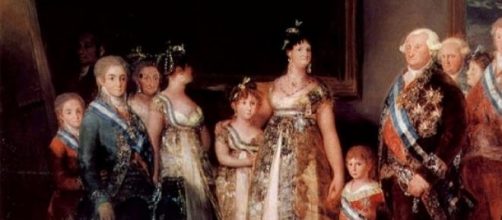A group of Spanish con men seem to have been duped themselves recently, as they attempted to sell a forgery of what was purported to be a painting by Goya. The client that they were attempting to 'con' seems to have been one step ahead of them throughout the negotiations, paying them the agreed fee with photocopied bank notes.
Two brothers from Girona in Catalonia hatched up the scheme after being conned themselves in an earlier transaction back in 2003, when they purchased the painting, believing it to be authentic at the time. The artwork was alleged to be a portrait done by Francisco Goya of another Spanish artist, Antonio Maria Esquivel, with an authenticity certificate to accompany it to confirm it as being genuine, which the brothers also came into the possession of.
Having already paid 20,000 euros of the 270,000 euro total price up front, it was determined by experts to be a fake, although it was confirmed as being a genuine 19th century portrait (but not a genuine Goya). On that basis, a Girona court in 2006 decided that the brothers were entitled to keep the painting and not have to pay any further amount in respect of it.
Biding their time, the brothers set out to cash in on their fake by agreeing to sell the painting to what was alleged to be an Arab sheik for 4 million euros, after discussions held during December 2014. They used the same authenticity certificate that they had been duped with 11 years earlier in their negotiations.
Believing the deal to be about to be clinched, the brothers agreed to pay out 300,000 euros of their own money to an Italian middleman, as a commission payment for the brokering of the arranged deal.
They were only able to finance the payment by involving a friend of theirs, with the promise of a significant mark-up in return. They then travelled to Turin to collect 1.7 million Swiss francs as a down payment on their painting, with the sheik alleged to be selling the artwork in Asia. At the same time as receiving their money in Turin, the 300,000 euro payment was handed over to the middleman in Girona by another Spanish contact.
The brothers only discovered that the money they had received was not authentic, when they attempted to pay the fortune in Swiss francs into a bank in Geneva. They were determined as being no more than photocopies. Deciding that they should depart Switzerland, matters got worse for the brothers when they were detained by French customs officers, upon finding the fake bank notes in their possession.
They also informed the Spanish authorities of the incident.
Both the fake sheik and the middleman have since disappeared, taking the brothers' legitimate money with them, the only authentic finance involved in the deal. The brothers have been charged with attempted fraud for their troubles and their fake painting has been confiscated.
The record for a Goya painting at auction is £4.5 million ($7.1 million), for the late oil-on-canvas Bullfight, Suerte de varas, 1824, at Sotheby's of London in December 1992, when the J. Paul Getty Museum, in Los Angeles bought it.They are rarely seen at auctions though, so when they do it creates quite a stir in the art world.
